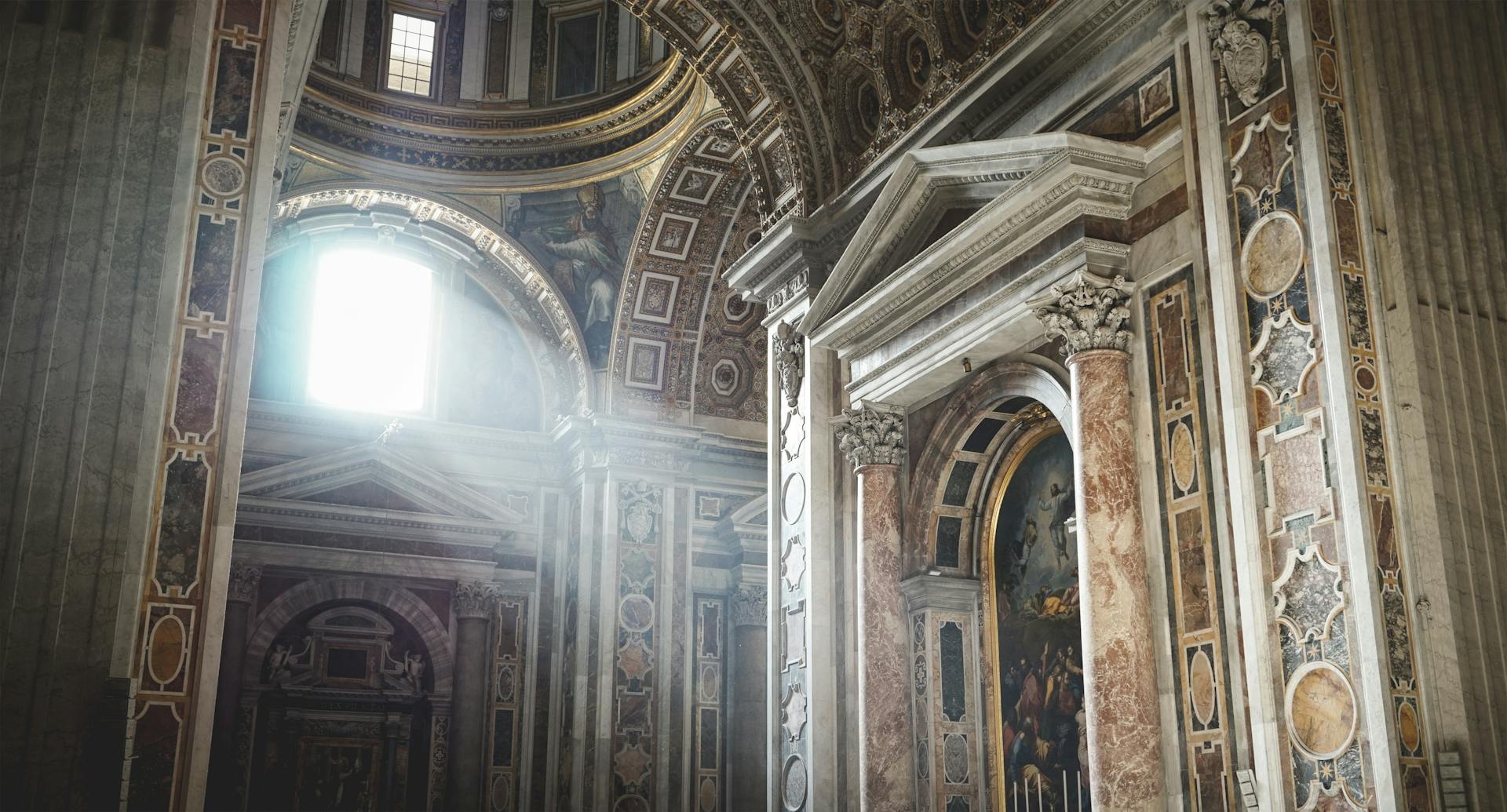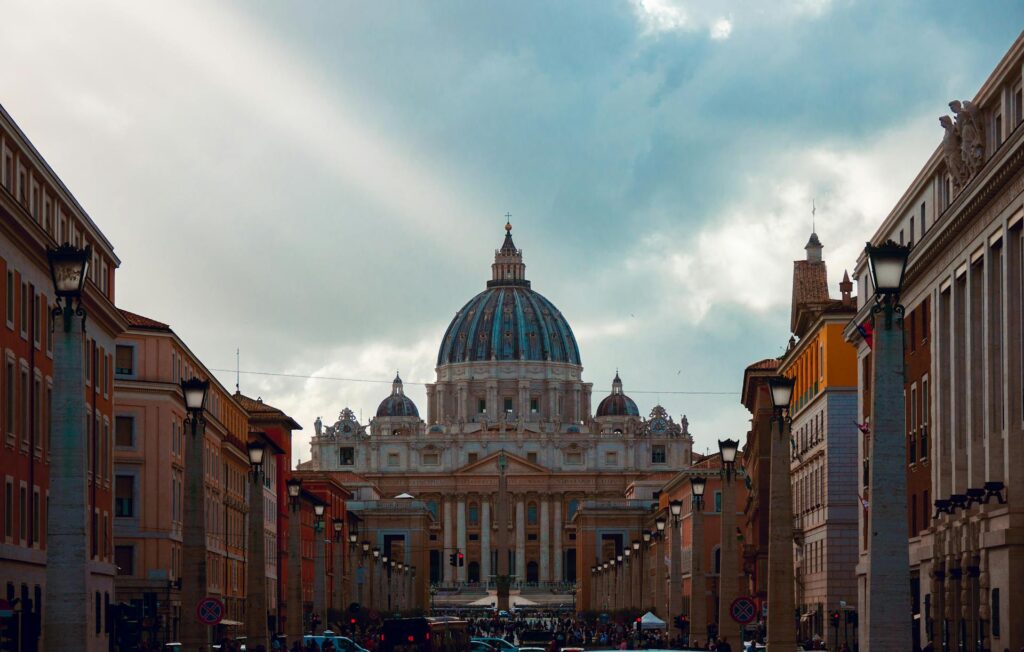Have you ever walked into a church and felt a sense of awe at the architecture surrounding you? You’re not alone. Church architecture has the power to inspire and uplift, creating sacred spaces that resonate with spirituality and community. But what makes some church designs stand out more than others? Let’s explore how certain sacred spaces have redefined church architecture and why they continue to captivate us.
The Role of Faith in Church Architecture
Church architecture is much more than just bricks and mortar; it’s a testament to faith and a reflection of the community it serves. Over centuries, architects have been tasked with the challenge of creating structures that not only serve as places of worship but also inspire those who enter them. The role of faith in church architecture cannot be overstated, as it often dictates the layout, design elements, and the overall atmosphere of the space. Many churches are designed to draw the eye upward, symbolizing a connection to the divine. This upward movement is not just about the physical structure—it’s also about uplifting the spirit of the congregation.
The influence of faith on church architecture can be seen in various styles, from the grandeur of Gothic cathedrals to the simplicity of modern minimalist churches. Each style reflects the theological beliefs and cultural context of its time. For instance, Gothic cathedrals with their pointed arches and ribbed vaults aimed to reach towards heaven, while modern churches often emphasize community and accessibility. This evolution showcases how church architecture adapts to the needs and beliefs of its congregation while maintaining its sacred purpose.
The Gothic Revival: A Turning Point
The Gothic Revival was a significant turning point in church architecture, influencing designs worldwide. This style, which emerged in the late 18th century, sought to revive the grandeur and spiritual essence of medieval Gothic architecture. The revival was not just about replicating the past; it was about capturing the spiritual fervor and mystery associated with the Gothic era. Many architects during this time were inspired by the intricate details and verticality of Gothic cathedrals, which they believed could evoke a sense of divine presence.
Churches built in the Gothic Revival style are characterized by their pointed arches, ribbed vaults, and flying buttresses, elements that were carefully crafted to create a sense of awe and reverence. The use of stained glass windows also became prevalent, transforming the way light entered the sacred space and adding a dimension of color and storytelling to the worship experience. The Gothic Revival was not just an architectural movement; it was a spiritual and cultural statement that redefined how people interacted with sacred spaces.
The Integration of Nature in Church Design
Integrating nature into church architecture creates a harmonious balance between the built environment and the natural world. Churches that incorporate natural elements such as gardens, water features, and extensive use of natural light create spaces that feel alive and connected to the earth.
The integration of nature is not only about aesthetics; it also enhances the spiritual experience by reminding worshippers of the beauty and wonder of creation. Churches with large windows that offer views of the surrounding landscape or those that incorporate outdoor worship spaces provide a sense of peace and connectedness. This approach to church architecture invites people to reflect on their place in the world and their relationship with the divine, making worship a truly holistic experience.
The Influence of Cultural Context
Church architecture is deeply influenced by the cultural context in which it is created. Each region and community brings its own traditions, beliefs, and artistic expressions to the design of their sacred spaces. This diversity is what makes church architecture so fascinating and varied. In some cultures, churches are adorned with intricate carvings and vibrant colors, reflecting the rich artistic heritage of the community. In others, the focus might be on creating a space that is austere and contemplative, in line with the cultural values of simplicity and humility.
Understanding the cultural context is crucial for architects as they design churches that are not only functional but also meaningful to the communities they serve. By incorporating local materials, symbols, and artistic styles, architects create churches that resonate with the people who use them, ensuring that these sacred spaces are cherished and preserved for future generations.
The Role of Acoustics in Church Architecture
Acoustics play a vital role in church architecture, influencing how music and spoken words are experienced within the space. The design of a church must consider how sound travels and is perceived, as this can greatly impact the worship experience. From the soaring ceilings of cathedrals that amplify choral music to the intimate settings of smaller chapels where spoken words are clear and resonant, acoustics are a key element in creating an engaging and spiritually uplifting environment.
Architects often employ specific design features such as vaulted ceilings, curved surfaces, and strategically placed materials to enhance acoustics. The use of sound-absorbing materials can also help control reverberation, ensuring that sound is clear and harmonious. By prioritizing acoustics in church design, architects can create spaces where music and worship are experienced in their full richness, enhancing the sense of community and connection within the congregation.

The Impact of Technology on Church Architecture
Technology has had a profound impact on church architecture, offering new possibilities for design and functionality. From advanced lighting systems that create dynamic worship environments to state-of-the-art sound systems that enhance acoustics, technology is transforming the way churches are built and experienced. Modern churches often incorporate multimedia elements such as large screens and projection systems, allowing for more interactive and engaging worship services.
The Significance of Iconography
Iconography is a significant aspect of church architecture, serving as a visual representation of faith and doctrine. Through the use of symbols, images, and artwork, churches communicate spiritual messages and stories that resonate with worshippers. Iconography can be found in various forms, from stained glass windows and frescoes to sculptures and mosaics, each contributing to the overall atmosphere and meaning of the space.
The choice of iconography often reflects the theological and cultural context of the church, offering insights into the beliefs and values of the community. By incorporating iconography into church architecture, architects create spaces that are rich in symbolism and meaning, inviting worshippers to engage with their faith on a deeper level. Iconography also serves as a timeless connection to the history and traditions of the church, ensuring that these sacred spaces remain relevant and inspiring for generations to come.
The Role of Light in Church Architecture
Light is a powerful element in church architecture, used to create atmosphere, highlight features, and symbolize spiritual themes. The way light interacts with the architecture can transform the mood of a space, making it feel warm and inviting or solemn and contemplative. Many churches are designed to maximize natural light, using large windows and skylights to bring the outside in and create a sense of openness and connection with the divine.
Artificial lighting is also carefully considered, with architects using different types of light to accentuate key areas of the church and create a dynamic worship environment. From the soft glow of candles to the dramatic effect of spotlights, light plays a crucial role in enhancing the spiritual experience. By understanding the interplay of light and architecture, designers can create sacred spaces that are both beautiful and meaningful, inviting worshippers to reflect and connect with their faith.
The Evolution of Church Layouts
The layout of churches has evolved over time, reflecting changes in liturgical practices, cultural norms, and architectural trends. Early Christian churches were often based on the basilica layout, with a long nave and side aisles leading to a central altar. This design emphasized the journey towards the sacred, guiding worshippers from the entrance to the heart of the church. Over time, new layouts emerged, such as the centralized plan of Byzantine churches, which focused on creating a unified and harmonious space.
Modern churches often experiment with more flexible layouts, allowing for multipurpose spaces that can accommodate a variety of activities and services. This adaptability reflects the changing role of churches in their communities, serving not only as places of worship but also as centers for social and cultural events. By considering the needs of the congregation, architects can design church layouts that are functional, welcoming, and spiritually enriching.
The Importance of Community in Church Architecture
Community is at the heart of church architecture, influencing every aspect of design from layout to materials. Churches are not just buildings; they are spaces where people come together to worship, celebrate, and support one another. This sense of community is reflected in the architecture, with spaces designed to encourage interaction and foster a sense of belonging. From communal gathering areas to intimate prayer rooms, every element of the design is intended to bring people together and strengthen the bonds of community.
Architects often work closely with congregations to understand their needs and aspirations, ensuring that the design reflects the unique character and values of the community. By prioritizing community in church architecture, designers create spaces that are not only beautiful and functional but also deeply meaningful to those who use them. This focus on community ensures that churches remain vibrant and relevant, serving as vital centers of faith and fellowship for generations to come.
Conclusion
Church architecture is a fascinating and multifaceted field that goes beyond mere aesthetics. It encompasses history, culture, spirituality, and community, creating sacred spaces that inspire and uplift those who enter them. From the grandeur of Gothic cathedrals to the simplicity of modern minimalist churches, each design tells a story and reflects the faith and values of its time. As we look to the future, the possibilities for church architecture are endless, with new technologies and ideas paving the way for innovative and sustainable designs. Whether through the integration of nature, the use of light, or the incorporation of community-focused spaces, church architecture continues to evolve, creating environments that are not only beautiful but also deeply meaningful.

Recent Posts
15 Floor Plan Graphic Styles That Will Elevate Your Presentation Game
The Role of Shadows in Architectural Storytelling
When Furniture Becomes Architecture: Blurring the Line